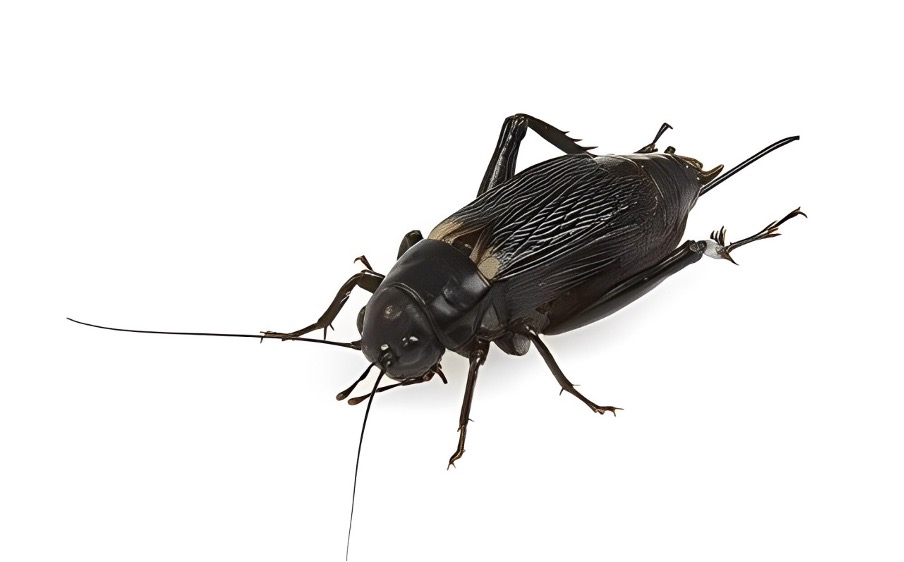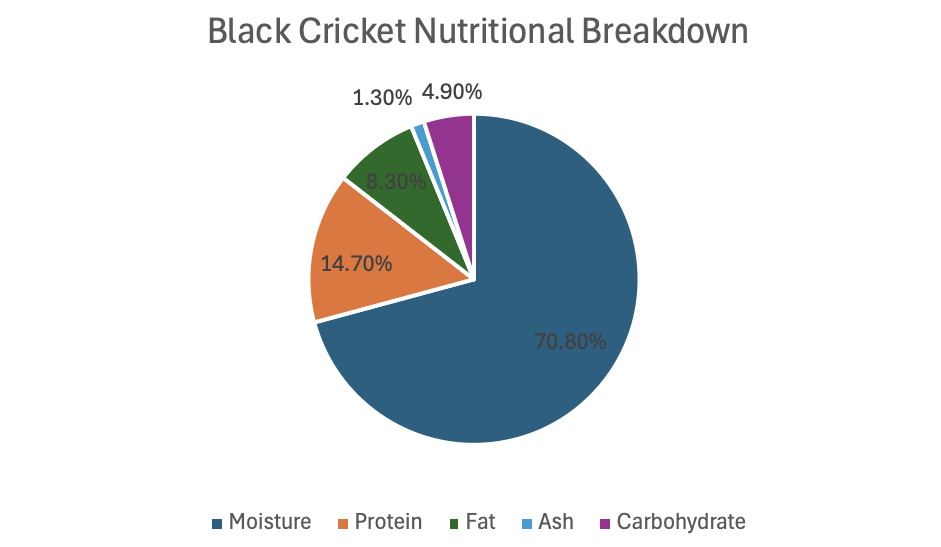
Black Cricket Care Sheet
Black crickets have similar qualities to brown crickets as a livefood and in nutritional terms are almost identical. Slightly larger than brown crickets they will withstand the high humidity required by certain reptile species better than the brown crickets.
Black crickets provide a highly nutritious diet (58.4% protein as a % of dry matter) for both birds and reptiles. Bred on Progrub, a protein rich meal blended specifically for cricket rearing by Livefoods Direct.
Feeding and Storage
Livefood Accessories:
Cut several egg trays (the kind you see in supermarkets) so they can lay on their side in the box provided but so that the top of the trays are at least 3” below the rim of the container. This will give the crickets space to perch, hide and moult safely.
Provide a feeding dish of progrub on the floor of the box next to the egg trays. Put some sliced carrot on top of the egg trays AWAY FROM THE PROGRUB. This can be replenished every couple of days, but any old uneaten carrot should be removed to prevent fruit fly infestations. Also add a feeding dish containing solid water gel or a jelly pot for moisture. Keep the container at a temperature of 18-22 °C.
Insects are living beings. It is our responsibility to ensure that the customer receives their insects in as perfect a condition as possible. After this, they become the responsibility of the customer. They should be treated with the same care and respect as the birds or animals that will consume them. If customer do not care for their insects, we cannot be responsible if they perish prematurely. We can not guarantee a shelf life for bulk Livefoods because we have no control over the methods employed by customers to care for them.
Crickets are going to escape – it’s a fact of life. Fortunately, they are extremely sensitive to insecticides.
When it comes to feeding crickets most lizards, frogs, toads, salamanders and some small snakes and turtles, crickets are probably the single most widely- utilized food in the world. When you consider that they’re also used as food for arachnids, birds, fish and some small mammals, and a fishing bait, you can just imagine the incredible number of crickets which are gobbled up every day.
Crickets are usually available in several different sizes. The smallest size is a hatchling which also can be called a “pin head” are just a couple of days old and are very tiny. They are comparable in size to fruit flies and likewise are easily handled even by such small animals as newly – metamorphosed froglets. Then there is a range of sizes from smalls to adults depending on what you are feeding.
Shipping Live foods in the winter months EXTREME COLD WEATHER (OVERNIGHT 0C OR LOWER)
Live foods recovery advice:
Your Livefoods may be totally dormant on arrival and may appear to be dead.
- Move them immediately to the warmest spot in your home, (room temperature)
- Leave them in this area overnight if needed.
- Don’t handle your livefoods unnecessarily until they are fully recovered
Bulk bags are for transportation, once your livefoods are moving normally, handle and store them in the normal manner.
Remember. Your livefoods may appear dead but 90% of the time they will recover if you follow this advice.





